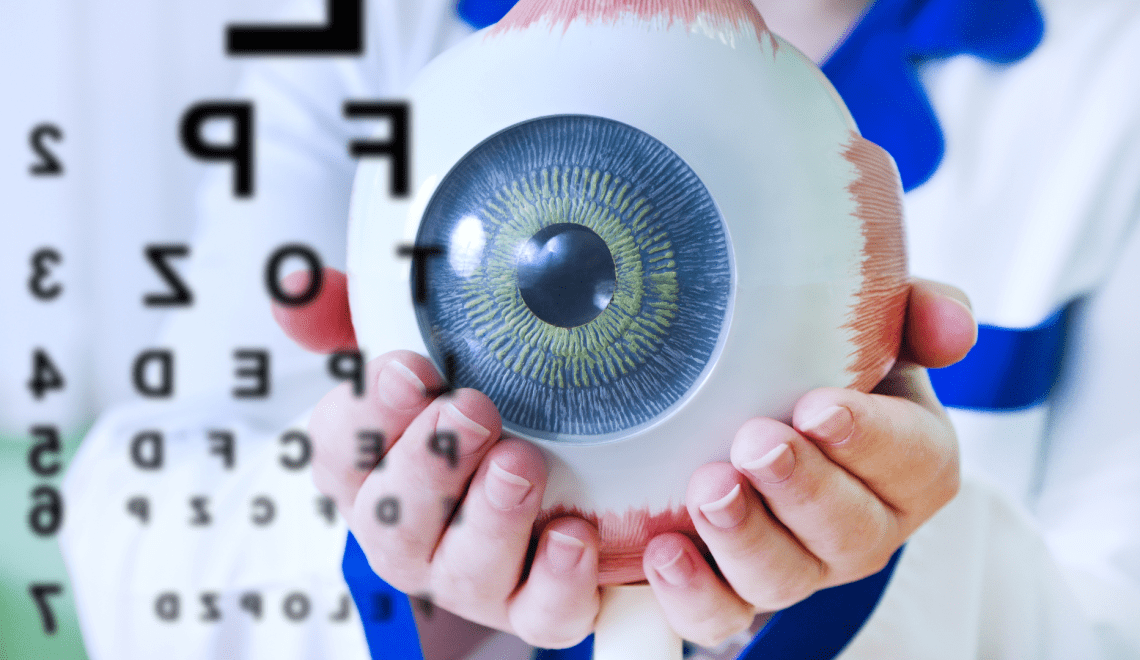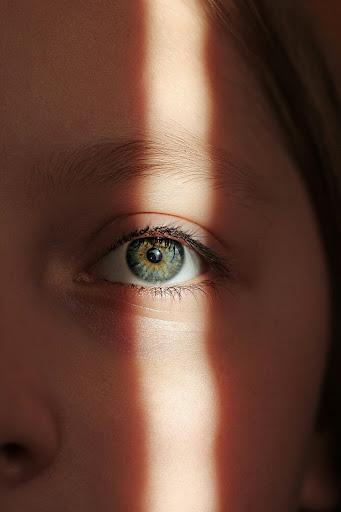
In recent years, there’s been a noticeable rise in short-sightedness—or myopia—among Australian children. If your child has been squinting more than usual or struggling to see the whiteboard at school, it may not be just a passing concern. In fact, about one in four Australian children now show signs of myopia, according to recent health surveys. That number has climbed sharply in the past five years, making it a timely issue for parents, educators, and healthcare professionals alike. If you’re unsure where to start, you can learn more about children’s eye health and optometry services to better understand how early support can make a difference.

This article aims to demystify what myopia is, why it’s becoming so common, and what steps parents can take to reduce the risk and manage the condition early on. Whether you’re new to the topic or simply concerned about your child’s screen habits, this guide provides practical advice based on current Australian research and recommendations.
What Is Myopia and Why It Matters
Myopia, commonly referred to as short-sightedness, is a condition where a person can see nearby objects clearly but struggles with things at a distance. For children, this can affect everything from seeing the board at school to recognising faces in the playground. When left unmanaged, it doesn’t just create short-term inconvenience—it can contribute to long-term vision complications, including high myopia, retinal detachment, and even early-onset cataracts.
But beyond the clinical risks, myopia can quietly chip away at a child’s confidence and performance. Struggling to keep up in class, participating less in sports, or avoiding outdoor activities can all stem from untreated vision problems.
Myopia Is Rising Fast in Australian Kids
The Latest Data
According to a national eye health report by Bupa Optical and other public health bodies, the rate of myopia in Australian children has nearly doubled in under five years. The trend is particularly evident in urban areas, where modern lifestyles have shifted significantly towards indoor activities and increased screen use.
A 2022 review by the Centre for Eye Research Australia (CERA) source found that children today are being diagnosed with myopia at much younger ages, and the condition is progressing more rapidly than in previous generations. This means not only more kids are affected, but they’re also at greater risk of developing high myopia later in life.
Genetics Alone Can’t Explain It
While genetics certainly plays a role—children with one or both parents who are myopic are more likely to be affected themselves—it’s now clear that environmental factors are major drivers of this surge. Experts agree: today’s kids are growing up in very different visual environments than their parents did.
What’s Driving the Surge?
Increased Screen Time
Whether it’s tablets, smartphones, laptops, or handheld consoles, modern kids are spending unprecedented amounts of time engaged in “near work”—activities that involve focusing on objects close to their face. Research shows that prolonged close-up focus encourages the eyeball to elongate over time, which is a primary cause of myopia.
And it’s not just about the number of hours spent. Screen-based activities are replacing the natural visual variation children used to get from outdoor play and varied distance viewing. It’s a subtle but powerful shift in how young eyes are being used.
Reduced Outdoor Time
Another major culprit is the declining amount of time children spend outdoors. Natural daylight plays a key role in regulating eye growth. Studies suggest that children who spend less than 60 minutes a day outside are significantly more likely to develop myopia than those who get two or more hours.
In Australia, the NSW Government’s Healthy Kids initiative recommends at least 10 hours of outdoor activity per week, especially during the early childhood years. Unfortunately, many children fall short of this target due to academic pressure, indoor entertainment, and parental safety concerns.
What Parents Can Do Right Now
The good news? Myopia isn’t inevitable. There are proven steps parents can take to protect their child’s vision and reduce the risk of progression.
Encourage Daily Outdoor Time
Outdoor play isn’t just good for a child’s mood and motor skills—it’s also crucial for their eyes. Exposure to natural sunlight helps regulate the release of dopamine in the retina, which can slow the elongation of the eyeball.
Experts suggest aiming for at least 2 hours of outdoor activity per day, or 10 hours each week. This can include:
- Riding bikes or scooters
- Playing at the park
- Exploring local walking trails
- Sports like soccer, cricket, or tag
Getting sunlight during the day (even on cloudy ones) is more effective than simply sitting near a window. For busy families, scheduling regular outdoor play as part of daily routines—before or after school—can make all the difference.
Manage and Monitor Screen Use
It’s unrealistic to ban screens entirely, but it’s important to set healthy boundaries. The “20-20-20 rule” is a great place to start: every 20 minutes, encourage your child to look at something 20 feet away for at least 20 seconds. This allows their eyes to relax and reduces digital eye strain.
Other simple screen strategies include:
- Avoiding screens for at least an hour before bedtime
- Keeping screen time under 2 hours per day for recreational use
- Positioning screens at least 30 cm from the eyes
If your child uses screens for schoolwork, be mindful of lighting and posture, and schedule regular breaks to protect their visual health.
Schedule Regular Eye Tests
Even if your child doesn’t complain about their vision, regular eye exams are essential. According to Vision 2020 Australia, 30% of children have never had a proper eye test, despite recommendations for checks at age 3, before school starts, and then every 1–2 years thereafter.
Routine exams can catch early signs of myopia or other issues like amblyopia (lazy eye) or astigmatism—conditions that are far easier to manage when detected early.
Myopia Treatment and Management Options
For children who are already showing signs of myopia, there are several evidence-based interventions now available in Australia.
Special Glasses and Lenses
- DIMS (Defocus Incorporated Multiple Segments) lenses: These slow eye growth while still correcting distance vision.
- Multifocal lenses: Often used for children with progressing myopia.
- Orthokeratology (Ortho-K): Special contact lenses worn overnight that reshape the cornea temporarily for clear daytime vision.
Low-Dose Atropine Eye Drops
Studies have shown that low-dose atropine (0.01%) drops can slow myopia progression in children without significant side effects. These drops are typically prescribed by paediatric optometrists and used nightly.
Why Early Action Matters
The earlier myopia is detected and managed, the better the long-term outcomes. Preventing rapid progression during childhood significantly reduces the risk of developing severe vision complications in adulthood. Cost and accessibility may vary, but many interventions are now available through Australian optometry clinics or referrals from your GP.
The Role of Schools and Health Professionals
Tackling myopia isn’t just a family matter. Schools and health professionals play a crucial role in early detection and prevention.
Vision Screening at School
Some Australian states offer vision screening programs in the early primary school years. These are useful in identifying children who may need a comprehensive eye test, although they should not replace regular exams.
Active School Environments
Teachers can help by encouraging outdoor play during recess, integrating movement into lessons, and avoiding prolonged screen-based tasks when unnecessary. Collaboration between schools, parents, and optometrists can ensure that vision care becomes a shared priority.
Final Thoughts
Myopia in children is on the rise in Australia, but that doesn’t mean it’s unstoppable. With a better understanding of the causes and early warning signs, parents can take proactive steps to preserve their child’s eyesight and quality of life.
A few small lifestyle shifts—such as spending more time outdoors, practising mindful screen use, and having regular eye exams—can have a profoundly positive long-term impact. The key is staying informed and making eye health a consistent part of your child’s wellbeing.
Frequently Asked Questions
What causes myopia in children in Australia?
Primarily a mix of genetics, excessive near work (e.g. screen time), and reduced outdoor activity.
How much outdoor time do kids need to reduce their myopia risk?
At least 2 hours per day or 10 hours weekly is recommended.
What’s the best age to test a child’s eyes?
Start at age 3, then test before school and every 1–2 years after.
Can myopia be reversed, or can it only be slowed?
While it can’t be reversed, early interventions can significantly slow its progression.
Are screen time limits enough to prevent myopia?
Screen limits help, but outdoor activity and regular eye exams are equally vital.
By taking action today, you’re setting up your child for a future where a clear vision supports learning, growth, and confidence. And if you’re unsure where to start, schedule a check-up with a local children’s optometrist who can guide you through your options.
Protecting Your Eyes from Blue Light: The Benefits of Blue Light Blocking Lenses







